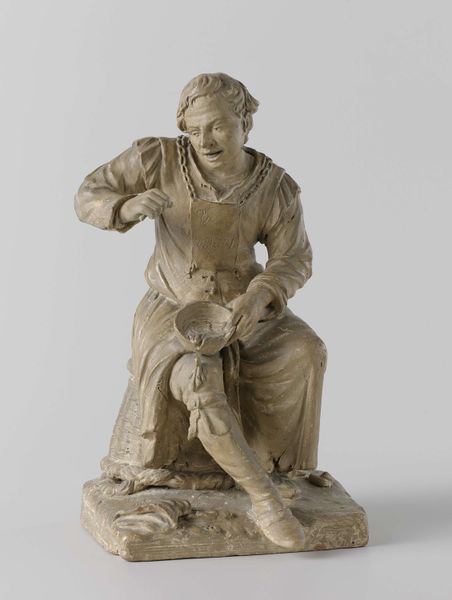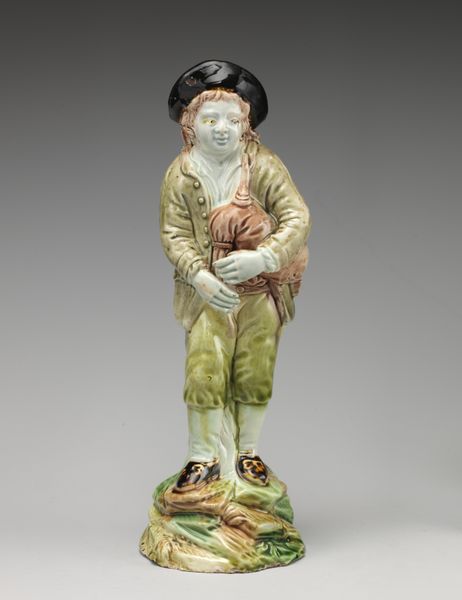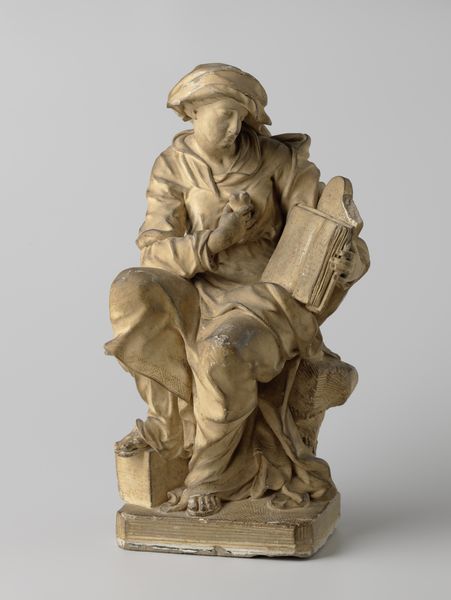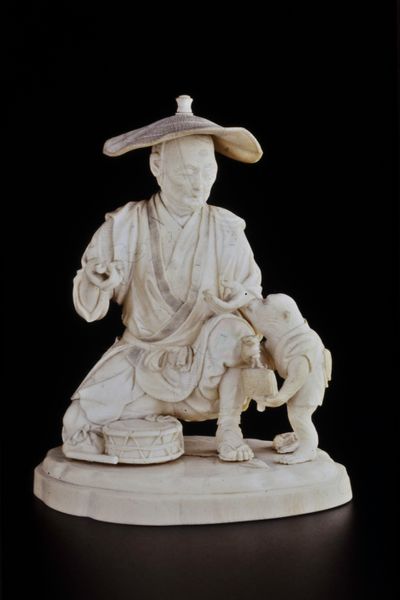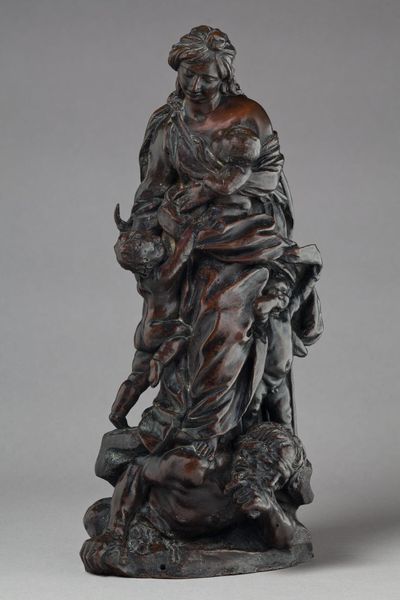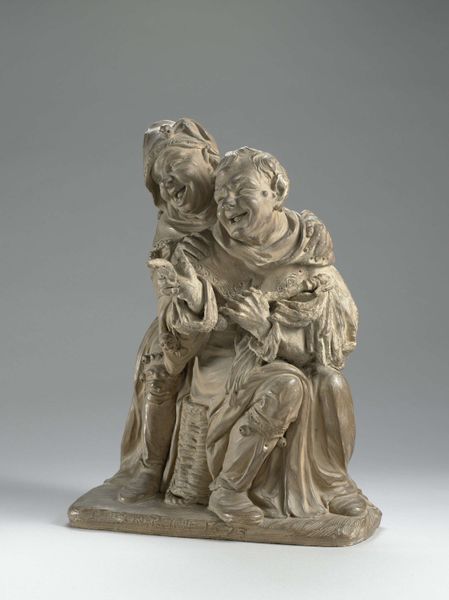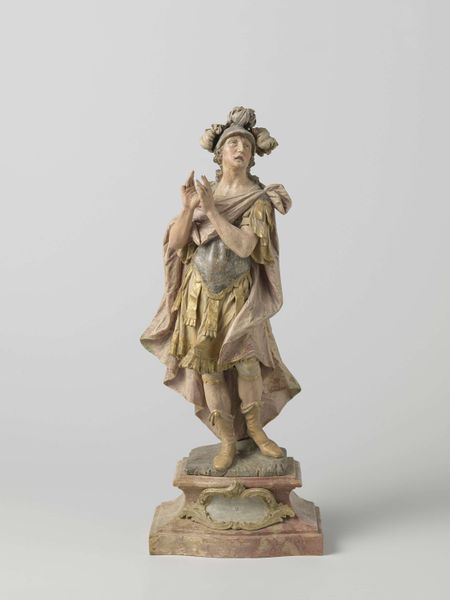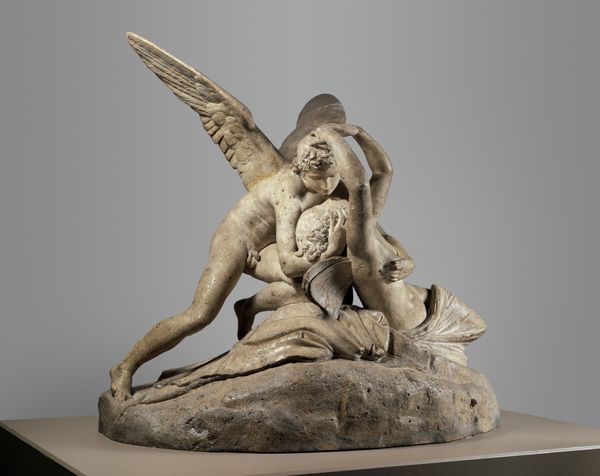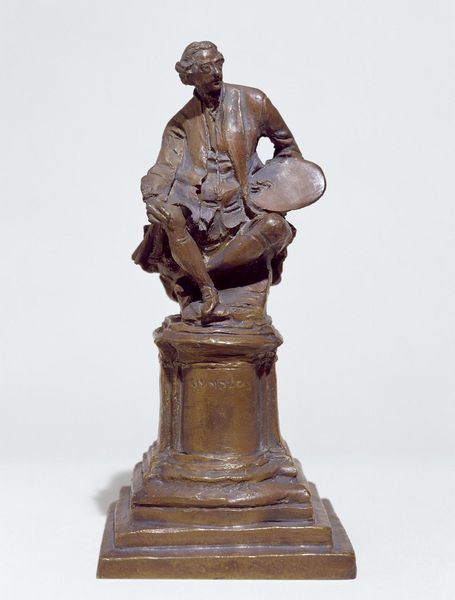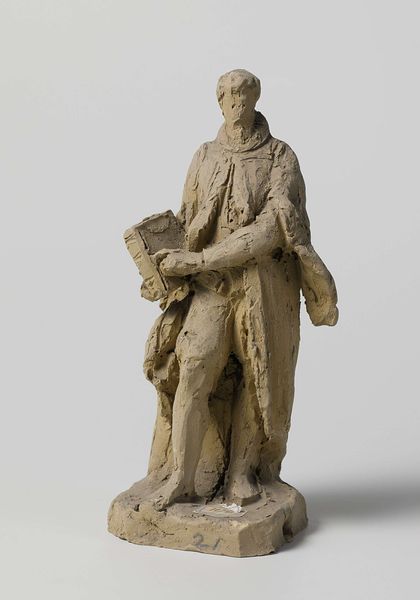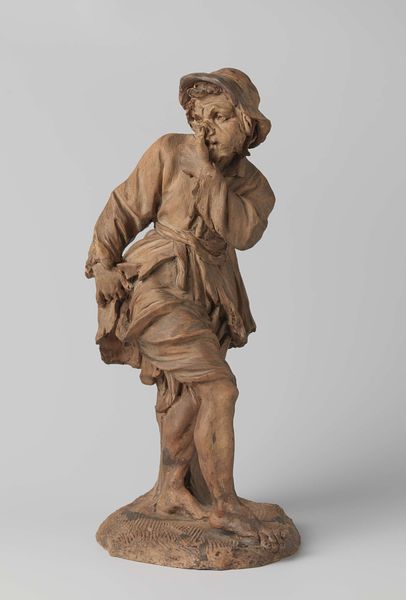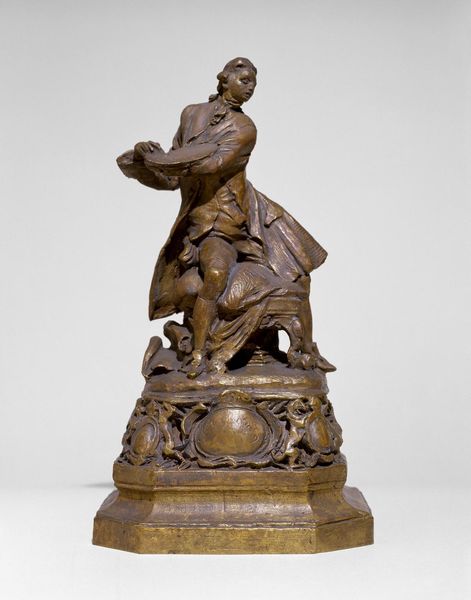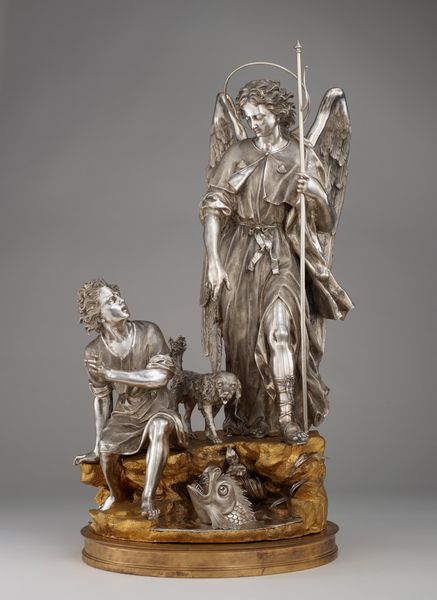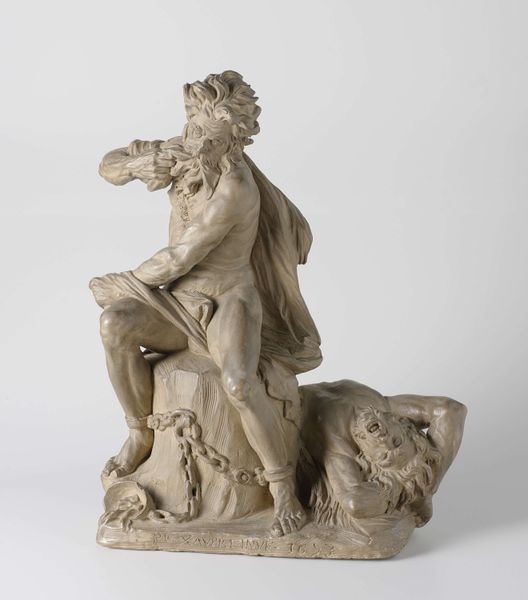
sculpture, wood
#
portrait
#
baroque
#
sculpture
#
figuration
#
sculpture
#
wood
Dimensions: height 31.3 cm, length 22.7 cm, depth 14.5 cm
Copyright: Rijks Museum: Open Domain
Curator: Pieter Xaveri’s “Hurdy-Gurdy Player,” crafted in 1673, immediately struck me. The fluidity of the Baroque style meets the rigidity of the wood... a fascinating marriage of contrasts! Editor: It's somber, isn't it? The monochromatic palette evokes a feeling of quiet introspection. And Baroque? I see it as more than just an aesthetic. This period represents an elaborate and controlled display of power, often used to quell dissenting voices through dramatic artistic expression. The music would perhaps serve a similar function. Curator: Hmmm… perhaps. But also think of the material, editor—wood is earthly, from the soil. Even the music here might point to community and a sort of grounding celebration. Look at the way the artist carved such expressive lines. You can almost *hear* the drone and melody. There's a joyful energy fighting against the material's constraints, you see? Editor: A good point. It would be fascinating to investigate how music functioned within society during Xaveri’s time. Consider the role of itinerant musicians; they occupied a liminal space, often associated with marginality. Does the figure’s attire position him within a particular class or social stratum, and does his music empower or disenfranchise? Curator: You know, it reminds me of when I first learned to play guitar. The clumsiness, the struggle… and then that pure, unadulterated *sound*. What could we even find out about hurdy-gurdy culture at this time in Europe? Editor: I’d bet the history of the instrument itself, a hand-cranked stringed instrument, tells a story of class and labor. Originally, it was a symbol of prestige in court circles, only later adapted by street musicians and the poor in search of an income. Who gets to create joy and how they have access, always feels worth considering. Curator: I like this detail. You've shifted my view—made me consider the historical and societal dimensions of someone making sounds and music to connect or survive... it has some somber weight to it after all. Editor: Absolutely. Even a work like this— seemingly straightforward—reveals complexities once we delve into its socio-historical context. And understanding those undercurrents allows us to engage with art, particularly Baroque art, on a much deeper level.
Comments
No comments
Be the first to comment and join the conversation on the ultimate creative platform.
